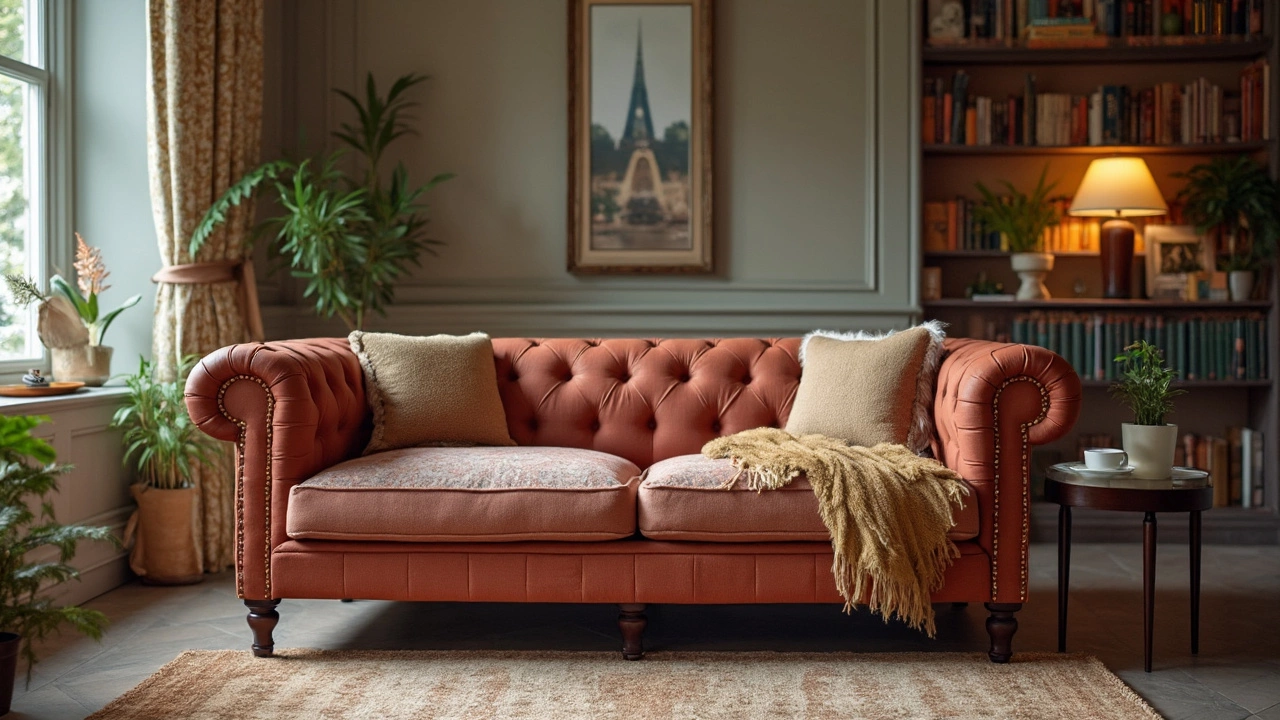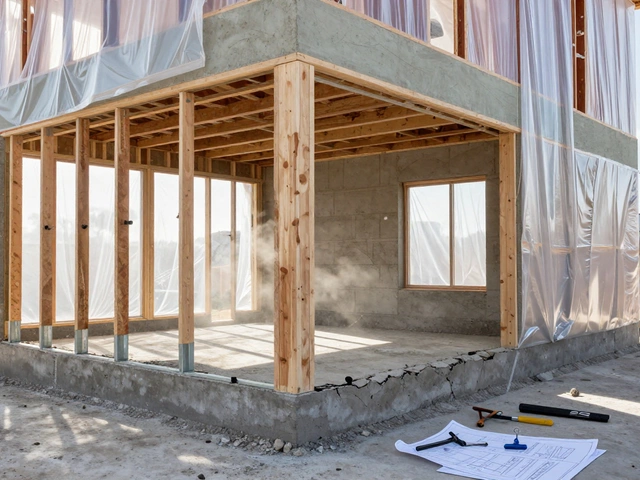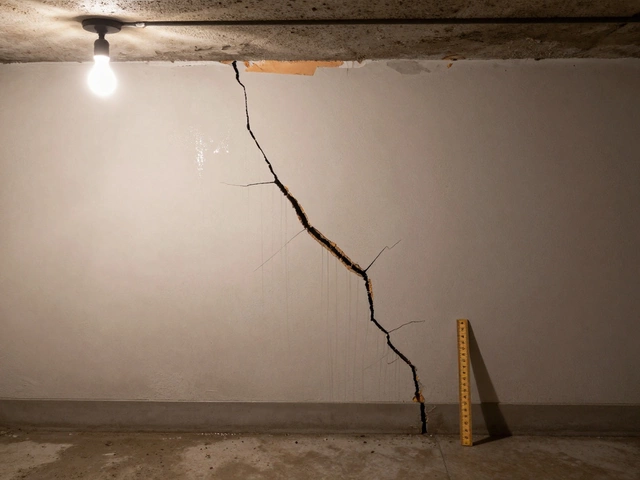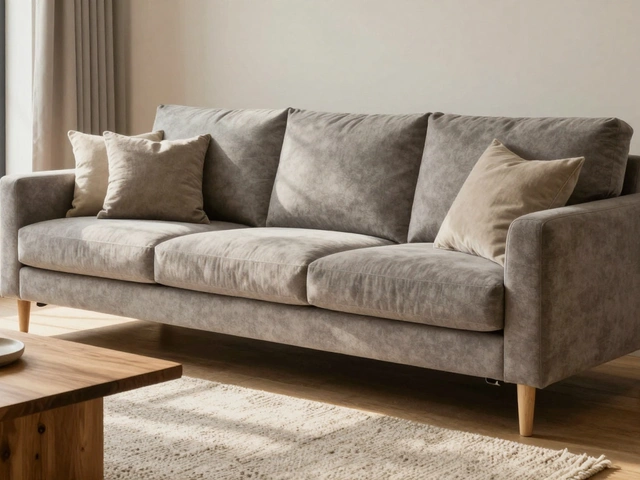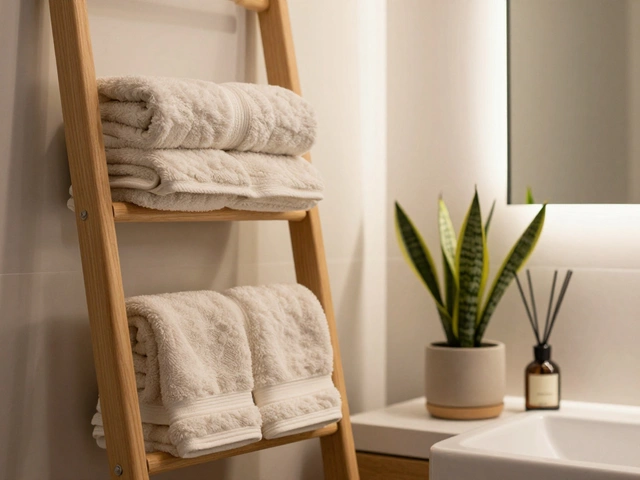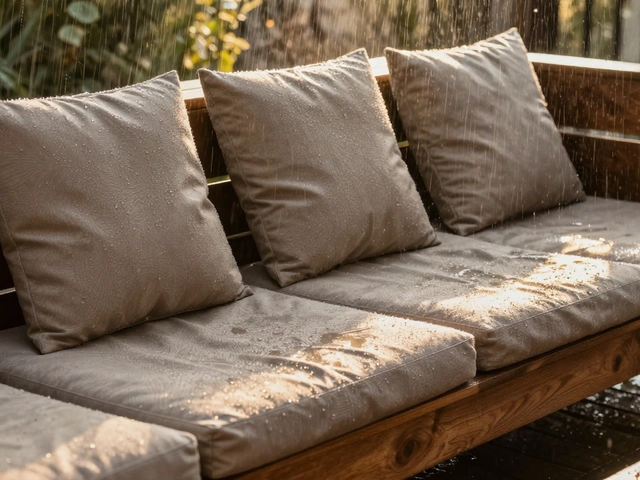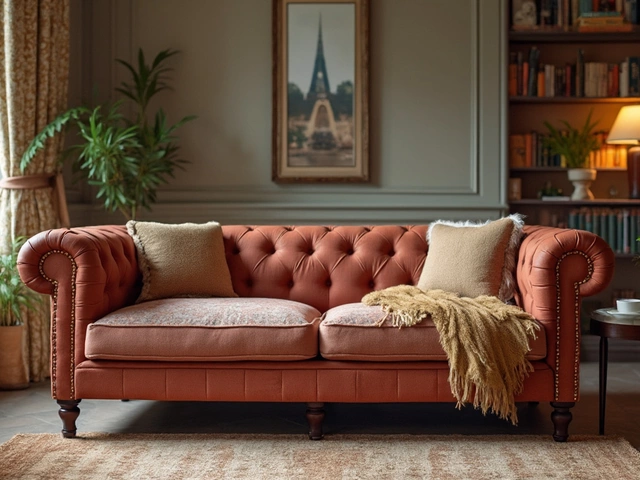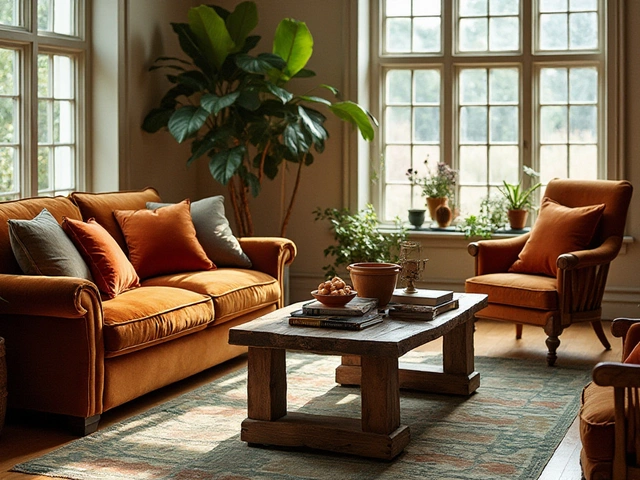Ever bought a cheap sofa and wondered how long it'll last before sagging like an old mattress? We've all been there. The truth is, the lifespan of a budget-friendly couch isn't set in stone. But a few key factors can help you gauge if your sofa is in it for the long haul or just a fleeting affair.
First up, let's talk materials. The stuff your sofa's made of plays a huge part in its durability. Opting for solid wood frames is generally more durable than their particleboard counterparts. And upholstery? Fabrics like microfiber often outshine their pricier leather friends in terms of wear-and-tear resilience.
Of course, construction quality can't be overlooked. Ever heard of stuff like corner blocking? Attention to these little details in the construction process can bridge the gap between a sofa that's a keeper and one that falters when you sit on it hard.
- Understanding Sofa Lifespan
- Materials Matter
- Construction Quality
- Daily Usage Impacts
- Tips for Extending Sofa Life
Understanding Sofa Lifespan
So, how long should your cheap sofa stick around before it becomes the dog's new favorite resting spot? The average lifespan of a budget-friendly couch typically falls between 5 to 10 years. That's considering normal wear and tear. But what influences this timeline?
Material and Build Quality really set the stage. Sofas with hardwood frames like oak or maple tend to outlast those made with softwood or particleboard. Durable fabrics, such as microfiber, contribute to longevity as they're less prone to ripping and staining. On the flip side, synthetic fabrics might not wear as gracefully.
Key Factors Influencing Longevity
- Usage Frequency: It's obvious but worth stating – the more you use it, the quicker it wears out. Using it daily as your go-to chilling spot will reduce longevity.
- Care and Maintenance: Regular cleaning extends your sofa's lifespan. Flipping cushions and vacuuming can keep it looking fresh longer.
- Quality of Workmanship: Models with kiln-dried frames and corner-blocked joints are generally more robust. Sofas where attention to structural details was scamped on will likely falter sooner.
To give you an idea, studies show that proper maintenance like regular vacuuming can increase furniture lifespan by about 20%. Even if your affordable couch isn't custom-built, choosing one with better structural features can make a world of difference.
Materials Matter
When it comes to the life of a cheap sofa, what it's made of is a big deal. You might be thinking, 'What difference does a few extra bucks make?' Well, it makes a lot of difference, actually.
Frame Materials
The backbone of your sofa is the frame, and it's where the rubber meets the road. Solid wood frames, like those made from kiln-dried hardwoods, are the gold standard for durability. They offer stability and can withstand the rigors of everyday use. On the other hand, particleboard or MDF (medium-density fiberboard) frames might be easier on the wallet but often bow to pressure before you'd like.
Upholstery Fabrics
The upholstery is the skin of your sofa. Go for options like microfiber – it's a champ in durability and stain resistance, making it pretty popular among affordable couch buyers. If you're dreaming leather dreams, remember, some faux leathers (or pleather) can peel over time, especially if they're on the cheaper side.
Cushion Stuffing
Let's talk comfort. The cushion filling directly impacts how long your sofa feels cozy. Common stuffings include foam, fiber, or down. Foam, especially high-density foam, retains its shape longer and provides good support. A mix of foam and fiber is often found in less pricey couches, providing a comfy compromise but often sagging faster.
- Sofa maintenance plays a big role. Flipping cushions and routine cleaning prolongs the life of materials, so keep that vacuum handy.
- Using fabric protectors can also help fend off spills and stains, keeping your sofa looking fresh.
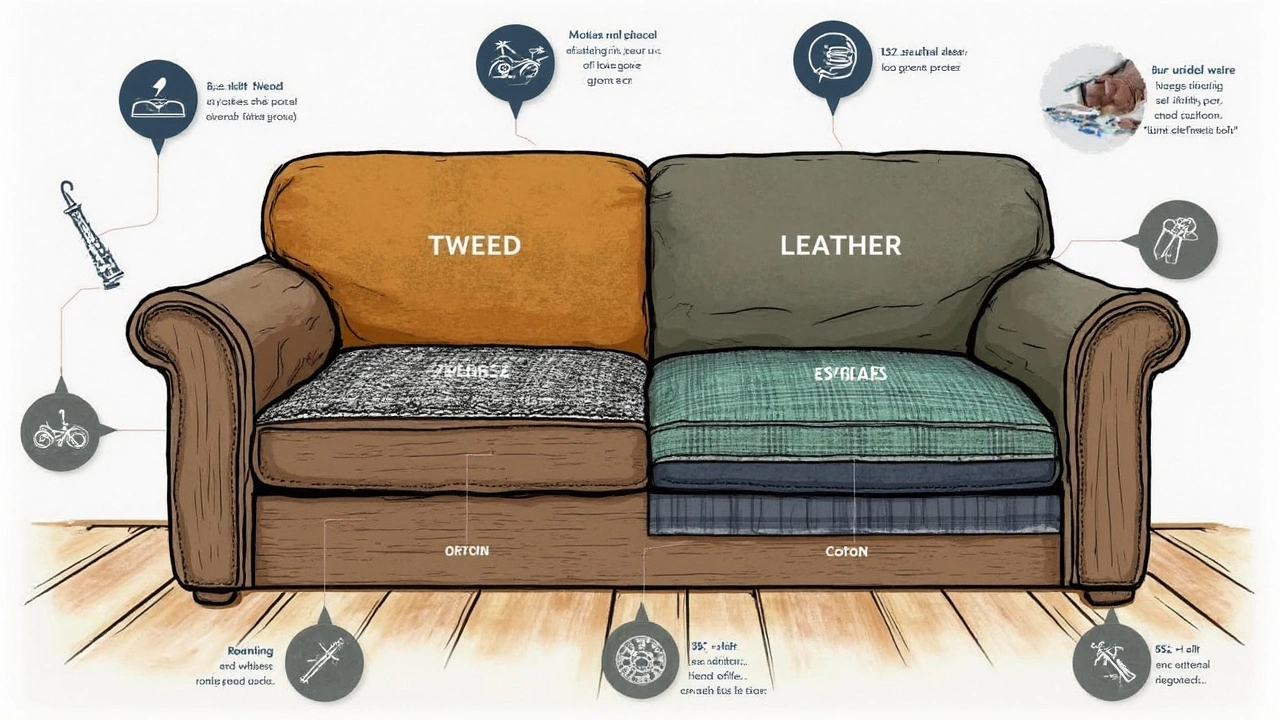
Construction Quality
When it comes to cheap sofa options, construction quality is a game-changer. You might think that all sofas are just about fabrics and cushions, but digging deeper into how they're put together can provide some eye-opening insights.
Frame Fundamentals
Let's start with the frame, which is essentially the backbone of your couch. Look for frames made from solid wood, like oak or maple. They tend to last longer compared to those made from softer woods or materials like particleboard. Particleboard might scream 'affordable,' but it could sag or snap under pressure. If solid wood isn't advertised, ask questions—get to know exactly what you'll be sitting on.
Joinery Methods
Remember hearing terms like dowel joints or corner blocks? They’re not just fancy words; they're crucial for the sofa's strength. These elements provide essential support and add years to your sofa's life. Steel frames use welding for durability, but make sure the welds are smooth and even. Poor quality in this area can lead to unexpected breakages.
Springs and Support
Now, consider the seating support. A sofa's comfort isn't just about the cushion thickness. Look underneath at the springs or webbing system. Sinuous springs, often seen in more affordable couches, can offer decent support. However, eight-way hand-tied springs are a sign of high-quality construction. It's a bit more rare in budget options but worth considering if you want long-term durability.
Assembly Tips
Here's a tip: if you assemble the furniture yourself, ensure all screws are tightly fastened, and the joints are snug. Even the best construction can falter if not put together correctly. Follow the instructions closely, and don't skip steps even if you're in a rush.
Investing a little time and understanding what makes a sofa sturdy can dramatically affect how long your affordable couch holds up and stays a comfy, reliable part of your home.
Daily Usage Impacts
How you use your cheap sofa plays a huge role in how long it sticks around. Picture this: a sofa in a busy family room versus one in a quiet guest room. It's no surprise the former will show signs of wear much quicker.
Let's break down some of the factors:
Everyday Use and Abuse
If your couch is the centerpiece in the living room where everyone gathers, it's bound to face more stress. Jumping kids, pets like my dog Rocky, or frequent movie nights all accelerate wear and tear. To keep your affordable couch in good shape, consider using throws or covers. They act as a barrier to dirt and help reduce fabric wear.
Moving the Sofa
Moving your couch around frequently can also impact its longevity. Dragging it across the floor can weaken joints and misalign frames, especially for those bought on a budget. Use furniture sliders or ask for help when repositioning to prevent unnecessary strain.
Weight Distribution
Oddly enough, where you sit matters! Always plopping down in your favorite spot? This causes uneven wear on cushions and springs. Encourage spreading the love across all seats to help maintain balance and even out pressure on the sofa.
Environment Factors
Believe it or not, where you place your sofa can affect its lifespan too. Direct sunlight can fade colors and weaken materials. Position your sofa away from windows or invest in blinds to limit exposure.
Humidity is another sneaky factor. A room that's too humid can lead to mold and mildew buildup on the couch, especially the underside. Keeping the area well-ventilated or using a dehumidifier can counteract this effect.
By being mindful of these daily habits and making a few tweaks to how you treat your sofa, you can surely extend its life, even if it didn't cost you an arm and a leg!
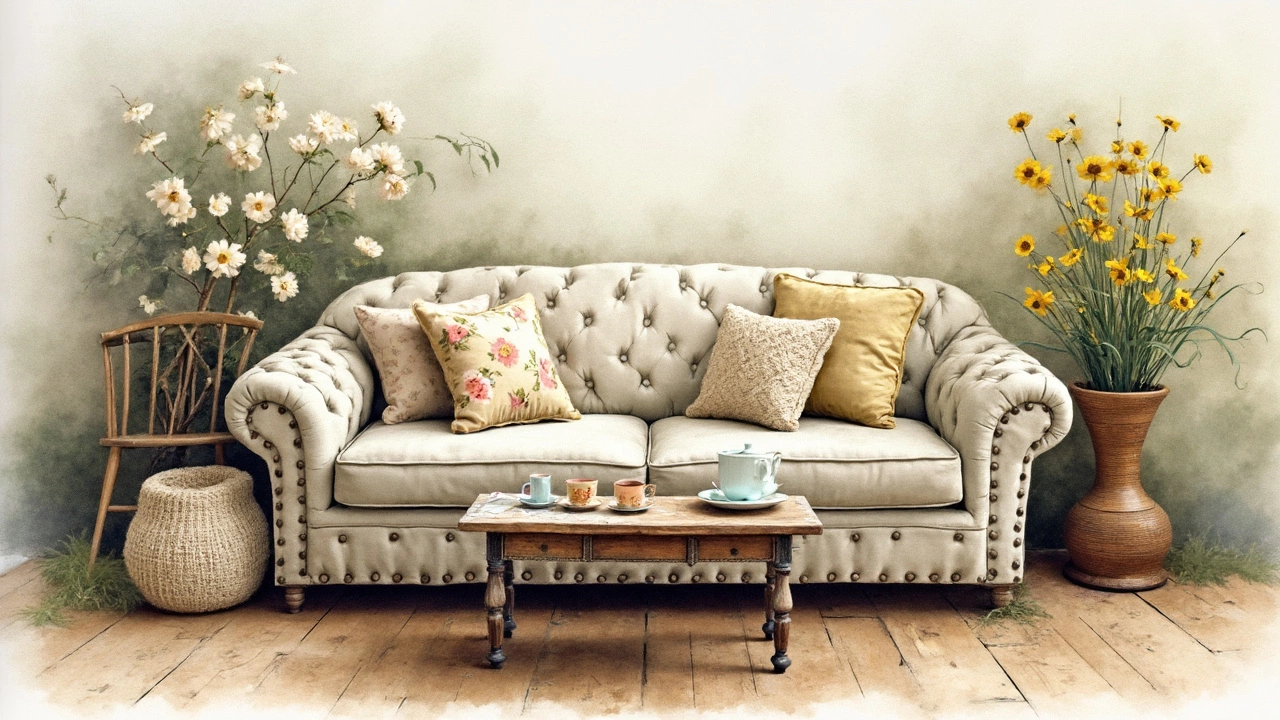
Tips for Extending Sofa Life
Your cheap sofa doesn’t have to be a short-lived affair. With some practical steps, you can extend its lifespan and keep it comfy and welcoming for years.
Cushion Care
Flipping and rotating your cushions regularly can prevent uneven wear. It’s like a mini workout for your couch! Doing this weekly helps distribute use evenly and keeps it from looking worn out on just one side.
Avoid Direct Sunlight
Nobody likes the faded look, especially not your sofa. Keep it away from windows where direct sunlight can bleach out the fabric. If your setup doesn’t allow it, consider UV-resistant covers or just pull the blinds during peak sunshine hours.
Regular Cleaning
Regular vacuuming is your sofa's best friend. Dust and crumbs can settle in and cause fabric wear. You don't need to go overboard, just a quick run every week or so. For fabric couches, using a fabric cleaner every few months can freshen things up significantly.
Protect from Pets
As much as you love Rocky, keeping those claws off the upholstery is important. Use blankets or pet furniture covers to safeguard against scratches and fur. If your pet’s adamant about couch time, maybe give them their own special spot on it.
Fix It, Don’t Ditch It
Spots, stains, or a little sag don't mean the end. Most issues are fixable with a little effort and the right products. Check online for specific cleaning tips for common stains. Stuffing can often be added to sagging cushions, bringing that snug feel back.
| Maintenance Task | Frequency |
|---|---|
| Flip Cushions | Weekly |
| Vacuum | Weekly |
| Fabric Clean | Monthly |
By keeping these things in mind, your affordable couch could stay in great shape much longer than you might expect. Sofa longevity isn’t magic; it’s just a bit of mindful maintenance.
